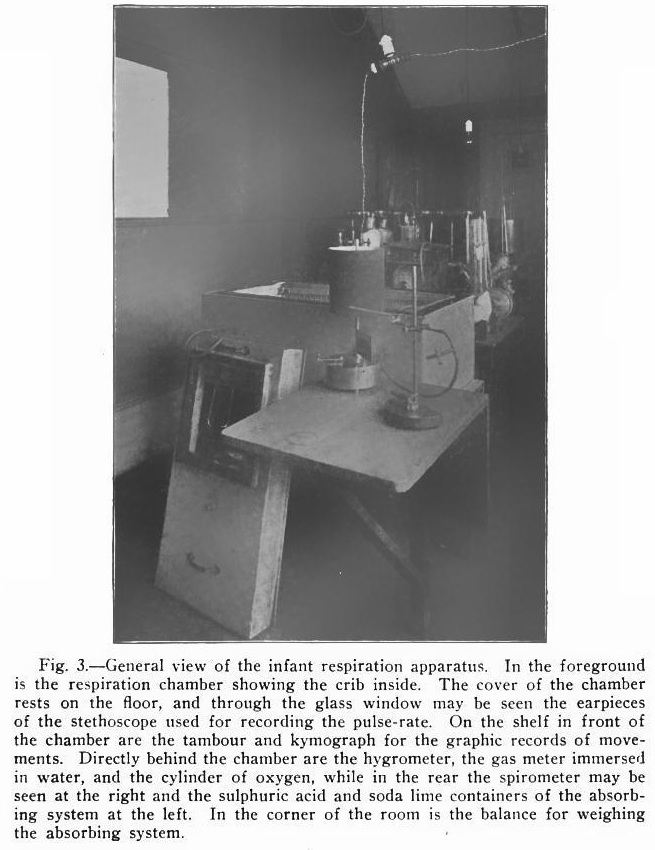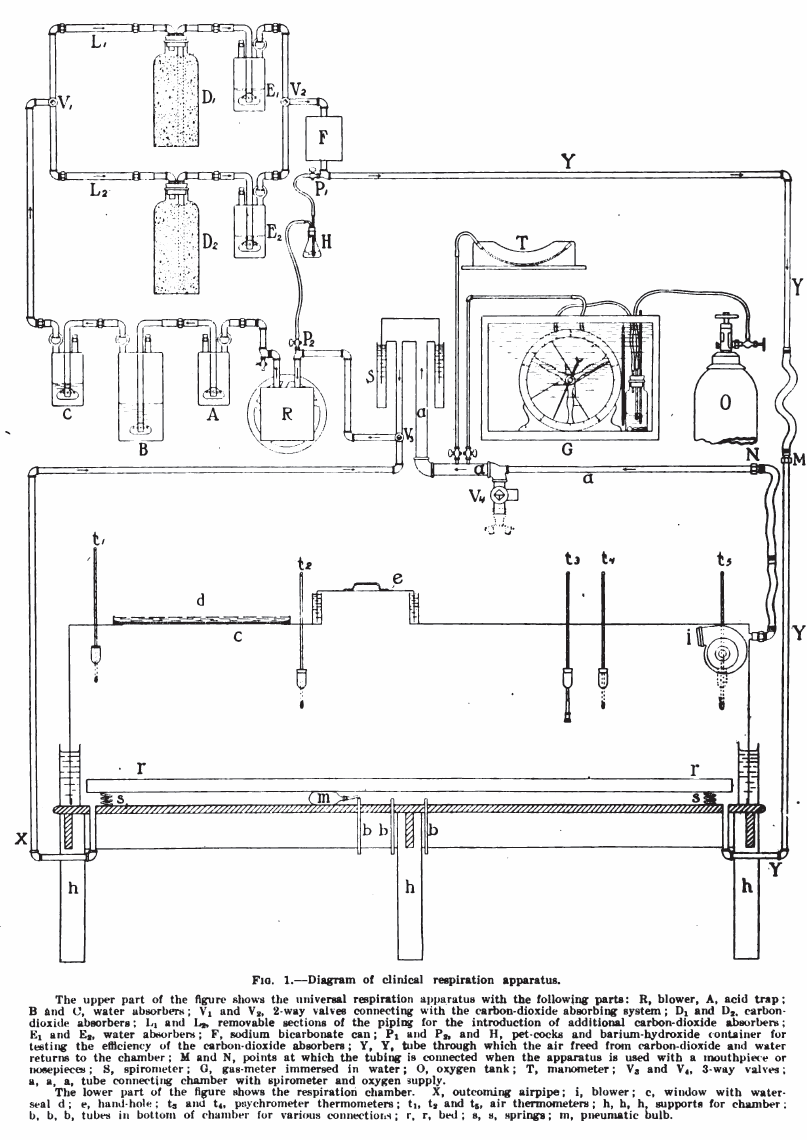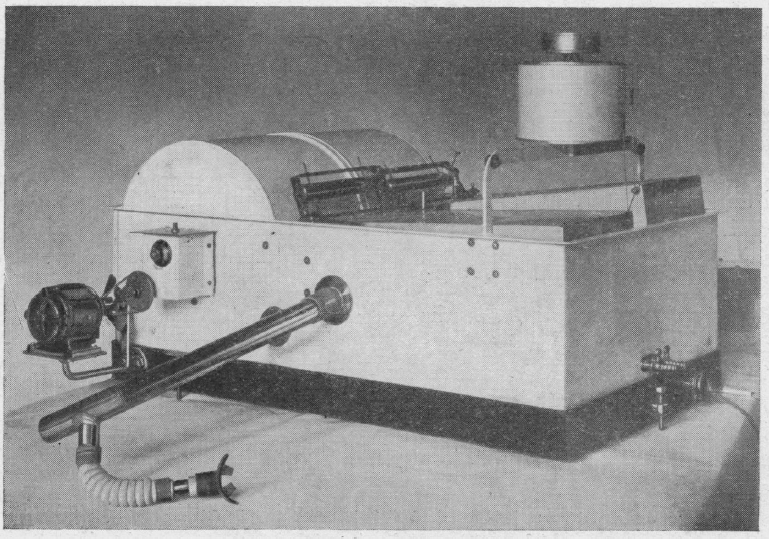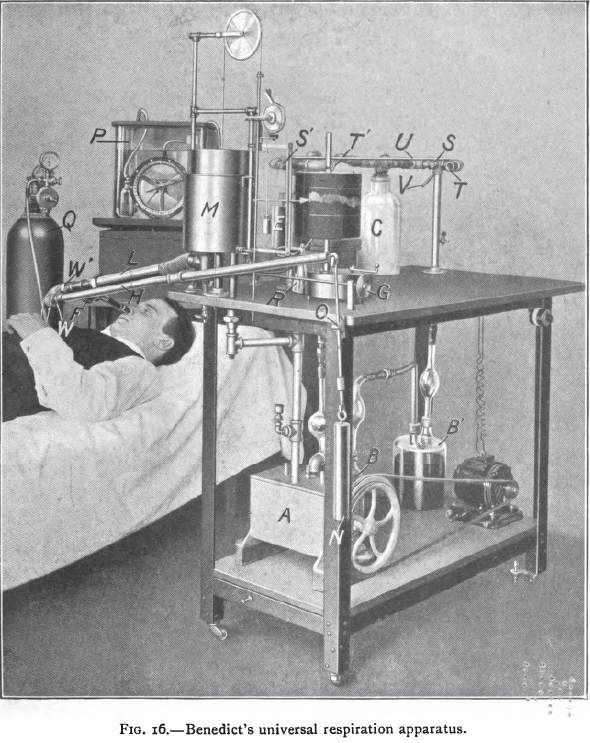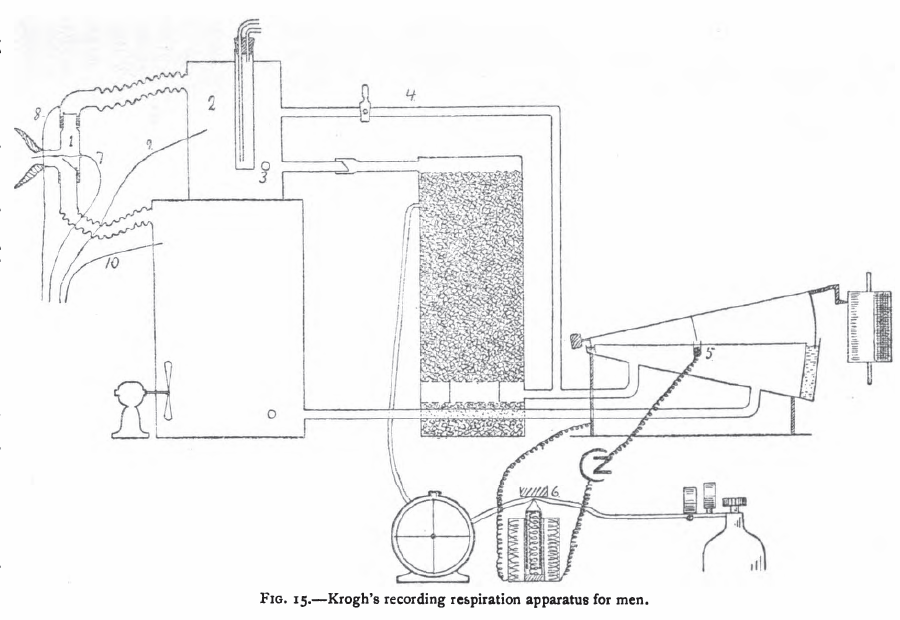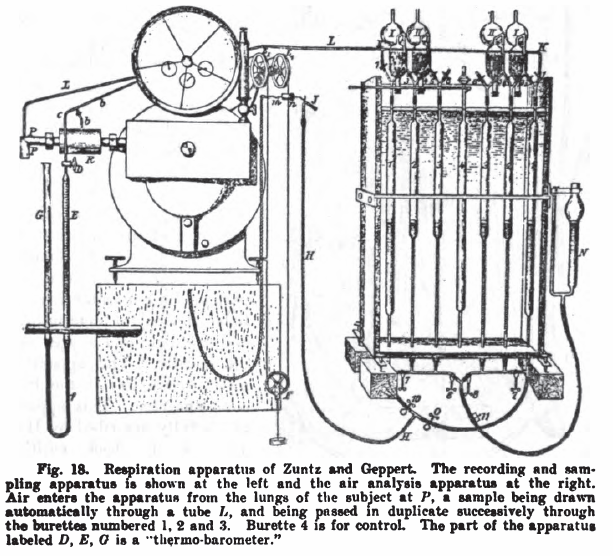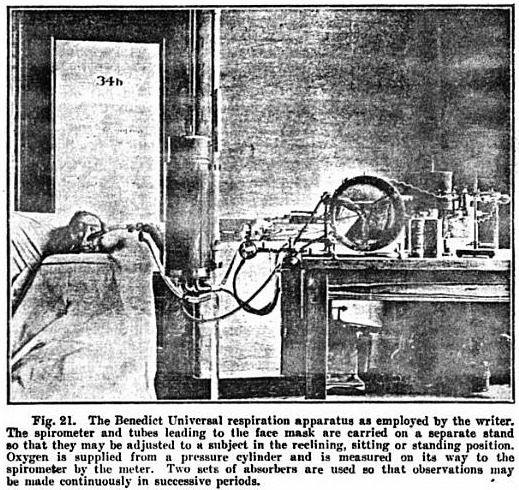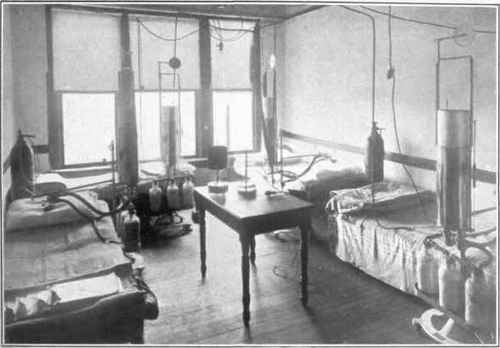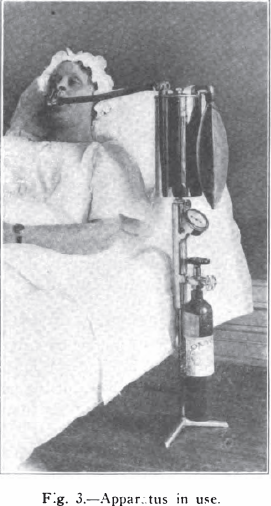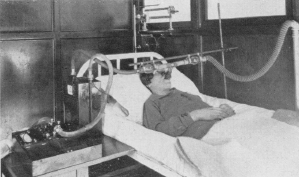From: Studies in the respiratory exchange of infants, by Frances Gano Benedict and Fritz B. Talbot, The American Journal of Diseases of Children, Vol 8, July, 1914, page 25.
Category Archives: Basal metabolism
Benedict Clinical Respiration Apparatus, 1916
Spirometer, Dual Krogh for oxygen consumption and CO2 production, 1924
From: CLXXII: An apparatus for the graphical recording of oxygen consumption and carbon dioxide output, especially adapted for clinical work. By H.C. Hagedorn. Biochemical Journal, 1924, page 1304.
“Figure 2 shows the apparatus in a convenient form which has been in use for about two years with complete satisfaction. The gas meters and spirometers are arranged in a common water-bath, the spirometers recording on a common drum, most conveniently with ink of different colours. The water-bath is fitted with an overflow tube to secure constant water level; it contains about 100 kg. water, and the expired air is led through a pipe of considerable length which is immersed in the bath to cool the air to the temperature of the bath before it enters the gas meter. From the service pipe to the spirometer (B) there is a wide pipe to secure that every change in air pressure caused by the respiration is taken up promptly by the spirometer (B), so that there can be an absolutely constant in the gas meter I.
“The accuracy of the results largely depends on the care with which the spirometers are balanced; every change in the air pressure in one of the spirometers will affect the water level in the corresponding gas meter and so disturb its accuracy. The spirometers are therefore arranged on special bearings and balanced with a double set of counterbalances, a large one for gross and a small one for fine adjustment. The counterbalances are adjustable horizontally and vertically, thus allowing convenient compensation for buoyancy of the spirometer.”
Benedict’s Universal Respiration Apparatus, 1916
From: The respiratory exchange of animals and man, by August Krogh, 1916, page 42.
“The apparatus of Benedict (fig. 16) [1909, 1912] is arranged to measure both carbon dioxide and oxygen, and the recording spirometer has an attachment (a “work adder”) which automatically adds the excursions together and so records the rate of ventilation. The instrument has no valves, but a rapid circulation of air is maintained by the blower. This is necessitated by the great resistance of the water-vapour absorbers. If this resistance were avoided the apparatus could be simplified considerably.”
Spirometer and metabolic apparatus, Krogh, 1916
From: The respiratory exchange of animals and man by August Krogh, 1916, page 40.
“Krogh’s apparatus (fig. 15) [1913] which is a modification of an instrument constructed by Haldane and Douglas [1912], is furnished with valves and the air is circulated by the respiratory movements of the subject. Carbon dioxide is absorbed in a vessel containing a charge of soda lime sufficient to absorb 1000 liters of carbon dioxide, a quantity produced by a man at rest in about 70 hours. The recording spirometer gives a quantitative record of the respiratory movements and governs the admission of oxygen by closing an electric circuit at (5). The oxygen from the cylinder is measured by the meter which records electrically by closing a circuit each time a certain quantity has been admitted. Whenever an experiment has to be extended over a long period, or if the absorption of oxygen is very rapid as during heavy muscular work, the oxygen admitted must be nearly pure to prevent the oxygen percentage in the small apparatus from falling.
“The apparatus in its present form does not allow the direct determination of carbon dioxide. When such determinations are desired samples of expired and inspired air are drawn from the vessels (2) and (10). The respiratory quotient is determined by analysing these samples for carbon dioxide and oxygen. The total respiratory exchange can also be measured over short periods by by multiplying the analytical results by the ventilation as measured from the graphic record.”
Gas Analyzer, Zuntz & Geppert, 1922
Spirometer, Benedict Universal Apparatus, 1922
Spirometers, Tissot, BMR, 1916
Portable respiration apparatus ready for bedside use with subjects at the International Young Men’s Christian Association College, Springfield, Massachusetts.
Benedict and Tompkins, Boston Med. and Surg. Journ., 1916
